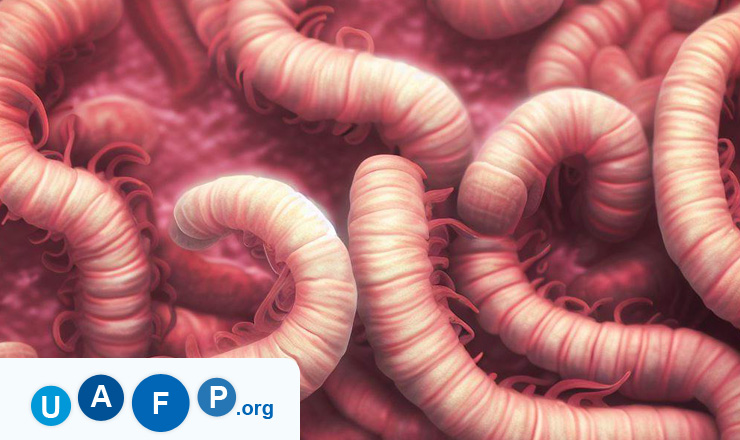A Comprehensive Guide to Treating Parasitic Infections in Humans
Parasitic infections in humans are a significant health concern worldwide. These infections are caused by various types of parasites that can enter the human body and disrupt its normal functions. The impact of parasitic infections can range from mild discomfort to severe illness, making it crucial to understand and effectively treat these conditions. In this comprehensive guide, we will explore the different types of parasitic infections, their symptoms, and the most effective treatment options available.

Types of Parasitic Infections
Protozoa Infections
Protozoa are single-celled organisms that can cause a variety of infections in humans. Some common protozoa infections include:
Malaria
Malaria is a life-threatening disease transmitted through the bite of infected mosquitoes. It is prevalent in many tropical and subtropical regions. Symptoms of malaria include high fever, chills, sweats, headache, and body aches. Prompt diagnosis and treatment are essential to prevent severe complications.
Amoebiasis
Amoebiasis is caused by the parasite Entamoeba histolytica. It primarily affects the intestines, leading to symptoms such as diarrhea, abdominal pain, and bloody stools. In severe cases, the infection can spread to other organs, causing liver abscesses. Proper sanitation and hygienic practices are vital to prevent the spread of amoebiasis.
Giardiasis
Giardiasis is caused by the parasite Giardia lamblia, which is commonly found in contaminated water sources. The infection affects the small intestine and leads to symptoms like diarrhea, abdominal cramps, bloating, and nausea. Maintaining good personal hygiene and consuming safe drinking water are key preventive measures.
Helminth Infections
Helminths are parasitic worms that can infect humans and cause significant health issues. The two main types of helminth infections are:
Roundworm Infections
Roundworm infections, such as Ascariasis and Trichuriasis, are prevalent in areas with poor sanitation and hygiene practices. These infections can lead to digestive problems, malnutrition, and impaired growth, especially in children. Proper sanitation, regular deworming, and education on personal hygiene are crucial to preventing roundworm infections.
Tapeworm Infections
Tapeworm infections, including Taeniasis and Echinococcosis, occur through the ingestion of contaminated food or water. These infections can affect various organs, causing symptoms such as abdominal pain, weight loss, and weakness. Effective food preparation, proper handwashing, and maintaining hygienic practices can help prevent tapeworm infections.
Ectoparasite Infections
Ectoparasites are organisms that live on the surface of the human body and feed on blood or skin. Common ectoparasite infections include:
Head Lice Infestation
Head lice are tiny insects that infest the scalp and cause intense itching. They are commonly spread through close contact with an infested person. Treatment involves the use of medicated shampoos and thorough cleaning of personal belongings to prevent reinfestation.
Scabies
Scabies is a contagious skin condition caused by the Sarcoptes scabiei mite. It results in intense itching and a characteristic rash. Treatment typically involves topical creams or lotions to kill the mites and alleviate symptoms.
Diagnosis and Treatment Options
Accurate diagnosis is essential for effectively treating parasitic infections in humans. Medical professionals employ various diagnostic methods, including:
- Microscopic examination of bodily fluids or stool samples.
- Serological tests to detect specific antibodies.
- Imaging techniques like ultrasound or X-rays to identify organ involvement.
Once diagnosed, the treatment approach depends on the type and severity of the infection. Common treatment options include:
- Antiparasitic medications: Medications specific to the parasite causing the infection are prescribed to eliminate the parasite from the body. The duration of treatment may vary based on the infection and the individual's response to medication.
- Supportive care: In some cases, supportive care measures like rehydration, pain management, and nutritional support are necessary to aid in the recovery process.
- Preventive measures: Educating individuals about preventive measures, such as practicing good hygiene, avoiding contaminated food or water, and maintaining a clean living environment, is crucial in preventing parasitic infections.
Applications of Stromectol in Treating Parasitic Infections
Onchocerciasis
Onchocerciasis, also known as river blindness, is a parasitic infection caused by the filarial worm Onchocerca volvulus. Stromectol is highly effective in treating this condition. It kills the microfilariae (larval stage of the worm) circulating in the bloodstream, thereby reducing skin and eye manifestations associated with the infection.
Strongyloidiasis
Strongyloidiasis is caused by the intestinal parasitic worm Strongyloides stercoralis. Stromectol is commonly prescribed for the treatment of this infection. It helps eliminate the worms from the intestines, alleviating symptoms such as abdominal pain, diarrhea, and skin rashes.
Scabies
Scabies is a highly contagious skin condition caused by the Sarcoptes scabiei mite. Stromectol is occasionally used in the treatment of severe or resistant cases of scabies. It effectively kills the mites, providing relief from the intense itching and reducing the spread of infection.
Head Lice
Stromectol has shown efficacy in the treatment of head lice infestation (pediculosis capitis). It can be used as an alternative treatment option when other topical treatments have failed. Stromectol disrupts the nervous system of the lice, leading to their elimination.
Other Parasitic Infections
Stromectol may also be prescribed for the treatment of other parasitic infections, such as:
- Lymphatic filariasis
- Strongyloides hyperinfection syndrome
- Cutaneous larva migrans
- Gnathostomiasis
- Elephantiasis
- The dosage and duration of treatment may vary depending on the specific infection and individual factors. It is essential to follow the instructions provided by your healthcare provider.
Conclusion
Parasitic infections in humans pose a significant health risk and can have severe consequences if left untreated. Understanding the different types of parasitic infections, their symptoms, and the available treatment options is vital for effective management and prevention. By following proper hygiene practices, seeking timely medical attention, and adhering to prescribed treatments, individuals can protect themselves and their communities from the detrimental effects of parasitic infections. Remember, knowledge is power, and together we can combat parasitic infections and promote a healthier world.




